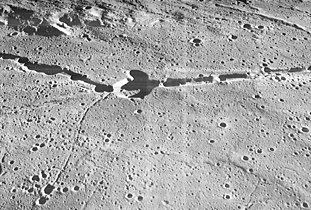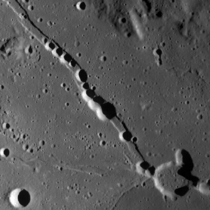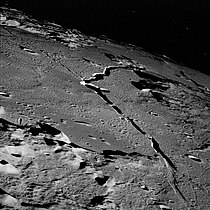Shown in this capture is the Hyginus crater and Rima Hyginus. The rille system of Rima Hyginus spans a length of over 220 km and the crater Hyginus measures about 11 km in diameter. One of the unique features of this crater is that it's origin is believed to be volcanic in origin. Some of the smallest craterlets that can be resolved measure about 1 km. The seeing was quite good, a 4/5 and the conditions were very good. North is towards the top in this image.
For more information about the area, please see the information from Wikipedia below.
From Wikipedia, the free encyclopediaHyginus
 Lunar Orbiter 4
Lunar Orbiter 4 image
Coordinates 7.8°N 6.3°EDiameter
7.8°N 6.3°EDiameter11 km
Depth0.8 km
Colongitude354° at sunrise
EponymC. Julius HyginusHyginus is a
lunarcaldera located at the east end of the
Sinus Medii. It was named after ancient Roman astronomer
Gaius Julius Hyginus.
[1] Its rim is split by a 220 kilometer-long
rille, Rima Hyginus, that branches to the northwest and to the east-southeast. The crater is deeper than the rille, and lies at intersection of the rille's branches. Together, the crater and the rille form a prominent feature in an otherwise flat surface. Smaller craters along the length of the rille may have been caused by the collapse of an underlying structure.[
citation needed]Hyginus is one of the few craters on the Moon that was not created as a result of an impact, and is instead believed to be
volcanic in origin. It lacks the raised outer rim that is typical with
impact craters.[
citation needed]Hyginus was considered a possible landing site during the
Apollo Program, because it was thought to be a site of potentially active volcanism.
[2] The landing point would have been northwest of the crater, within a few kilometers of the main crater rim and the rille to the west. Major objectives would have included examining and sampling the
Cayley Formation and dark overlying rocks, the crater rim and floor, and other possible volcanic features in the area.
[3]It was near Hyginus that in 1878
Hermann Klein claimed to have discovered a new crater.
[4]Views[
edit]










Comments